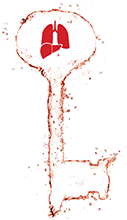Adrenomedullin: Mechanism of Action
Adrenomedullin (ADM) has been shown to play a significant role in many physiological processes, including cellular growth, development, chemotaxis and migration Ref-1-6. It also has potent anti-microbial activity, eliciting its response through membrane channel formation and lysis, as well as anti-apoptotic actions Ref-7-10. However, two main actions are of significant interest in many disease conditions.
Microcirculation and vascular endothelial barrier function properties
Increasing evidence suggests that adrenomedullin may play a key role in reducing vascular permeability and increasing the stability of the microcirculation. Recent studies have shown that ADM may be involved in predicting sodium and extracellular fluid overload Ref-11 and plasma leakage Ref-12, reducing vascular hyperpermeability Ref-13, stabilising endothelial barrier fuction Ref-14, and redistributing blood flow back to sites which had experienced a lack of perfusion due to alpha-toxin infusion. Ref-15
In short: Adrenomedullin can accurately reflect the developing pathophysiological changes occurring in the microcirculation and microvascular during diseased conditions. Monitoring ADM levels, therefore, could be useful in evaluating disease progression or assessing the efficacy of therapeutic interventions on the host response.

Adrenomedullin: a key role in disease development
- Early predictor of organ dysfunction and outcome Ref-16
- Protects against endothelial permeability and organ damage Ref-13,17,18
- Protective effects in organs in response to bacterial induced shock Ref-19,20
- Stabilization of microcirculation in inflammation Ref-15
- Restoration of endothelial stability in infected organs Ref-21
Vasodilatory properties
Perhaps one of the most well known features of adrenomedullin are its vasodilatory properties. Increased circulating concentrations have been shown to result in a potent and sustained hypotension, mainly due to the generation of Nitric Oxide in the vasculature, with transient concentration surges contributing to the dramatic hypotension and vascular collapse found in patients with acute episodes of systemic capillary leak syndrome Ref-22. Acute or chronic increases in ADM can also result in a significant decrease in total peripheral resistance, a fall in blood pressure, and an increased heart rate, cardiac output and stroke volume.
Increases or decreases in adrenomedullin levels, therefore, can have a significant effect on blood supply to organs in certain disease settings.

Adrenomedullin: vasodilation is key
- Key mediator of vascular tone regulation resulting in an intense, prolonged vasorelaxation and hypotension Ref-23-28
- Widespread production helps maintain blood supply to individual organs Ref-23,25,29
- Localized cellular production to meet specific perfusion requirements of individual organs Ref-30,31
- Significant role in hemorrhagic and endotoxic shock Ref-32-34, pulmonary hypertension Ref-35, hypertrophy Ref-36,37, hypoxia Ref-38-43, oxidative stress Ref-44, ischaemic myocardial injury Ref-45-48 and ischaemic injury and organ failure Ref-49,50
The dual actions of a double edged sword
Adrenomedullin is differentially increased in many diseased states, such as heart failure, sepsis, hypertension, and cardiovascular disease. Understanding and distinguishing between the dual actions of ADM is crucial in developing targeted treatment strategies. Significantly decreasing levels of ADM may result in a decrease in hypotension, yet simultaneously jeopardize vascular integrity Ref-22. Hence treatment should be targeted at decreasing or maintaining concentrations at a level which benefits both mechanistic properties.
References Adrenomedullin: mechanism of action
Ref-1: Kohno et al. 1997; Hypertension 29(6):1309-1313.
Ref-2: Fernandez et al. 2000; J Leukoc Biol. 67(5):669-676.
Ref-3: Kamoi et al. 1995; Biochem Biophys Res Commun. 211(3):1031-1035.
Ref-4: Kohno et al. 1998; Circulation 98(4):353-359.
Ref-5: Iwasaki et al. 1998; Endocrinology 139(8):3432-3441.
Ref-6: Withers et al. 1996; FEBS Lett. 378(1):83-87.
Ref-7: Allaker et al. 1999; FEMS Immunol Med Microbiol. 23(4):289-293.
Ref-8: Yin et al. 2004; Hypertension 43(1):109-116.
Ref-9: Allaker et al. 2006; Peptides 27(4):661-666.
Ref-10: Marutsuka et al. 2001; Exp Physiol. 86(5):543-545.
Ref-11: Vigue et al. 2016; Crit Care 20(1):363.
Ref-12: Michels et al. 2011; J Clin Virol. 50(1):8-12.
Ref-13: Temmesfeld-Wollbruck et al. 2007; Intensive Care Med. 33(4):703-710.
Ref-14: Temmesfeld-Wollbruck et al. 2007; Thromb Haemost. 98(5):944-951.
Ref-15: Brell et al. 2005; Crit Care Med. 33(12):2810-2016.
Ref-16: Ueda et al. 1999; Am J Respir Crit Care Med. 160(1):132-136.
Ref-17: Muller-Redetzky et al. 2014; Crit Care 18(2):R73.
Ref-18: Vallet et al. 2002; Crit Care Med. 30(5 Suppl):S229-234.
Ref-19: Gonzalez-Rey et al. 2006; Am J Pathol. 168(6):1921-1930.
Ref-20: Carrizo et al. 2007 Surgery 141(2):245-253.
Ref-21: Pugin et al. 2014; Crit Care 18(3):152.
Ref-22: Xie et al. 2018; J Leukoc Biol. 2018.
Ref-23: Kitamura et al. 1993; Biochem Biophys Res Commun. 192(2):553-560.
Ref-24: Christ-Crain et al. 2005; Crit Care 9(6):R816-824.
Ref-25: Hinson et al. 2000; Endocr Rev. 21(2):138-167.
Ref-26: Landry et al. 2004; Sci Am. 290(2):36-41.
Ref-27: Ishiyama et al. 1993; Eur J Pharmacol. 241(2-3):271-273.
Ref-28: Ishiyama et al. 1995; Clin Exp Pharmacol Physiol. 22(9):614-618.
Ref-29: Eto et al. 2001; Peptides 22(11):1693-1711.
Ref-30: Elsasser et al. 2002; Microsc Res Tech. 57(2):120-129.
Ref-31: Takahashi et al. 2000; J Neurochem. 74(1):99-103.
Ref-32: Fujioka et al. 1999; Anesth Analg. 88(2):326-328.
Ref-33: Kikumoto et al. 1998; Anesth Analg. 87(4):859-863.
Ref-34: Ono et al. 1998; Shock 10(4):243-247.
Ref-35: Kakishita et al. 1999; Clin Sci (Lond). 96(1):33-39.
Ref-36: Tsuruda et al. 1998; Hypertension 31(1 Pt 2):505-510.
Ref-37: Yoshihara et al. 1998; Eur J Pharmacol. 355(1):33-39.
Ref-38: Cormier-Regard et al. 1998; J Biol Chem. 273(28):17787-17792.
Ref-39: Cejudo-Martin et al. 2002; Hepatology 36(5):1172-1179.
Ref-40: Nagata et al. 1999; Kidney Int. 55(4):1259-1267.
Ref-41: Trollmann et al. 2002; Eur J Endocrinol. 147(5):711-716.
Ref-42: Hofbauer et al. 2000; Am J Physiol Regul Integr Comp Physiol. 278(2):R513-519.
Ref-43: Nakayama et al. 1998; Peptides 20(6):769-772.
Ref-44: Ando et al. 1998; Hypertens Res. 21(3):187-191.
Ref-45: Abraham et al. 2005; N Engl J Med. 353(13):1332-1341.
Ref-46: Nagaya et al. 1999; Heart 81(5):483-487.
Ref-47: Oie et al. 2000; Circulation 101(4):415-422.
Ref-48: Vijay et al. 1999; Clin Sci (Lond). 96(4):415-420.
Ref-49: Ishimitsu et al. 1994; J Clin Invest. 94(5):2158-2161.
Ref-50: Wang et al. 1995; Proc Natl Acad Sci U S A 92(25):11480-11484.
